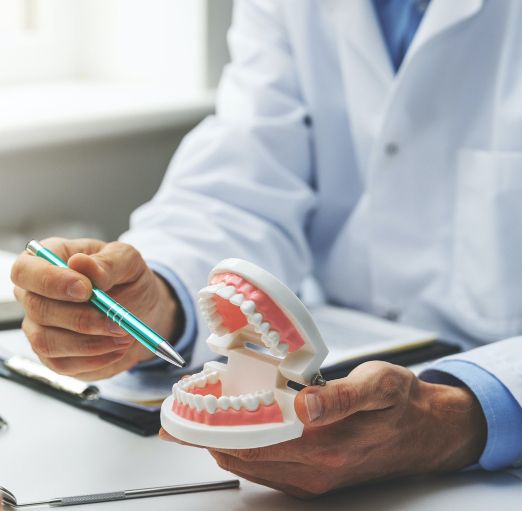To maintain a healthy and stunning smile, you must take action to care for your dental health on a regular basis. Flossing and brushing your teeth at home are crucial, but so is visiting your dentist for a routine dental check-up. You will receive preventive dental attention, including a professional teeth cleaning, during this appointment.
As you undergo your dental cleaning, you might notice some similarities between this treatment and periodontal therapy to eradicate gum disease. While these procedures share some tools and processes, they serve different purposes.
Understanding what is involved in both of these treatments can help you enhance your oral healthcare. Explore the differences between a professional teeth cleaning appointment and periodontal disease treatment from your dentist when you read on.

Cleaning Your Teeth at Your Dentist’s Office
A toothbrush and floss might not be able to reach all areas within your mouth to get your smile as clean as it needs to be. For this reason, you should schedule dental check-ups that include teeth cleanings every six months or so.
A professional dental cleaning begins with providing the patient with mouthwash to rinse loose particles from the teeth to give a cleaner foundation for the dentist to work with. Then the dentist will use a scaler to scrape away stubborn plaque and tartar from the teeth, especially residues that can become trapped near the gumline.
The dentist will then use a special brush and paste to polish the surface of the teeth. This can get rid of surface stains, leaving your smile looking radiant after the cleaning process. They finish the treatment by flossing between the teeth.
Dental patients of any age will need this preventive care. Otherwise harmful plaque or tartar will encourage bacterial spread that can give a patient tooth decay, gum disease, and other dental problems.
Treating Gum Disease with Professional Periodontal Therapy
Gum disease refers to an infection affecting the gum tissue that affects about half of American adults. It does not go away of its own accord. You will need treatment from a dentist to restore gum health. Periodontal therapy to treat gum disease begins with a traditional professional dental cleaning to eliminate excess plaque and other build-ups.
Then the dentist begins a deep cleaning process known as scaling and root planing to target bacteria in the infected gum tissue. They use a scaler to reach below the gumline to clear away residues that a toothbrush alone cannot access. They then smooth the damaged gum tissue to encourage it to heal and reattach to the tooth.
While routine dental cleanings also use a scaling tool, periodontal therapy provides a more specific purpose. It works to restore the health of the gums rather than just reduce the risk of contracting a dental problem.
Early stages of gum disease can benefit from periodontal therapy. But more advanced infections might require more invasive solutions to get rid of the disease for good. Find the treatment that will suit your oral health needs when you contact your dentist.
